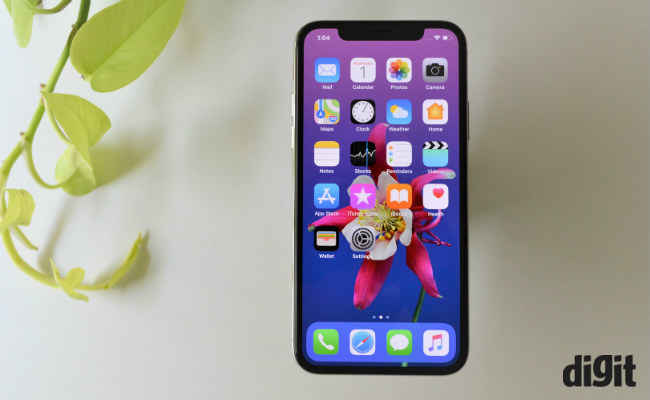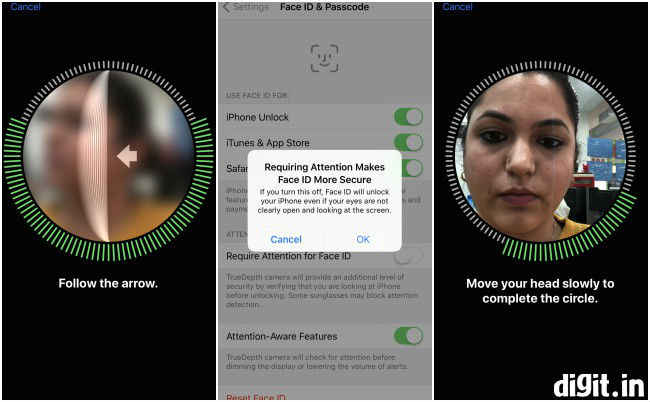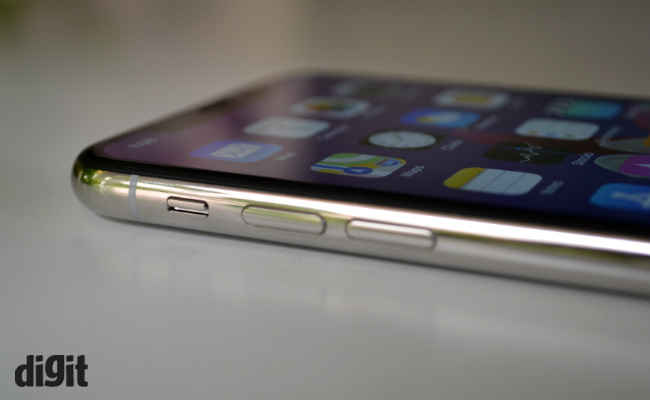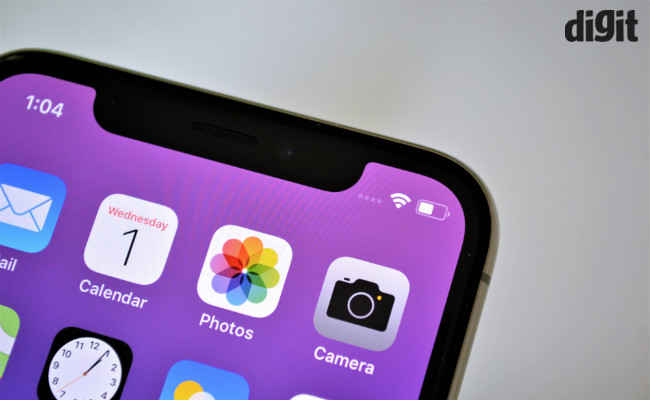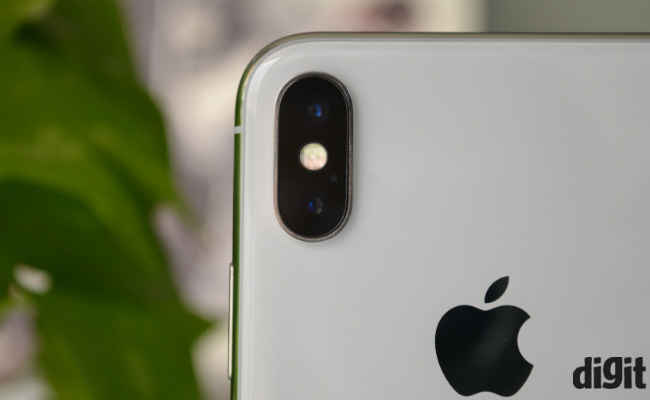Apple iPhone X First Impression: A brave step towards the future
Face ID works and the missing home button is not a problem. That's our key take away after having spent precious little time with the iPhone X. And yes, the latest iPhone finally looks and feels like a modern flagship smartphone from a company that started it all. Apple has taken a rather brave step towards re-imagining the iPhone, amidst a cloud of doubt on how fans will react to a completely new way of using the iPhone. We look at the iPhone X as just the beginning of a brand new chapter in the iPhone history.
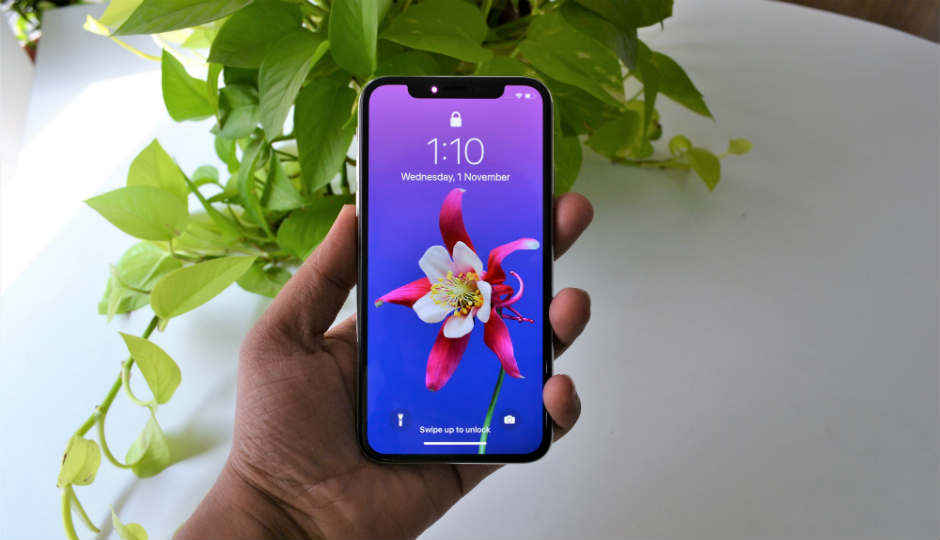
The moment we got our hands on the iPhone X, we set ourselves on a mission, a mission to check-out (and challenge) the Face ID system. Desperately wanting to get a taste of Apple's TrueDepth camera that uses the combination of a dot projector, an infrared camera and the flood illuminator to create a depth map of the face for instant and secure face recognition. Here's an account of how our very first encounter with Face ID unfolded, along with our overall first impression of the X, the Apple iPhone X.
 Survey
SurveyFace ID: Registering is easy, unlocking works fine, wish it was a wee bit faster
Registering your face on Face ID is pretty easy, straightforward and super fast. In fact, it is faster than registering your fingerprint on the iPhone 8 (or any other iPhone). Once registered, our first few attempts at unlocking the iPhone X went fine. After turning off the lights however, there were a few occasions where the iPhone X decided to stay locked, making us punch-in the pass code. We decided to repeat the process all over again, this time however, we ensured enough lighting while registering the Face ID. And, that ensured the phone unlocked every single time. Also, the unlocking was a tad faster. Overall, Face ID turned out to be a good experience with no real panic or learning curve involved. Having said that, the good ol' fingerprint based unlocking on the iPhone 8 Plus feels faster for sure. And perhaps also more convenient, at least till we get used to the Face ID system.
Tip 1: While registering your face on Face ID, ensure there's ample light on your face, the more accurately it reads your face the first time (while registering), the easier and faster is the face unlocking process.
Tip 2: You can try turning off the "Require Attention for Face ID" feature under the "Face ID & Passcode" settings option. This further makes face unlocking faster and easier. Though as per Apple, this is an additional layer of security and hence comes enabled by default. But is still being offered as an optional feature.
Tip 3: Pick up the phone and swipe up straight away, without waiting for Face ID to unlock. This way, the processes of swiping up and Face ID detection to unlock run parallel and hence the phone takes less time to unlock. Plus, it takes you to the home screen with just one action – swiping up.
Watch our quick video on Face ID to learn more:
An all screen iPhone and life without the home button
The home button is gone, making way for an all screen design with a prominent notch on top (to accommodate the Face ID sensors) that happily breaks the front design symmetry. Something that we aren't accustomed to on an Apple product. In our opinion, you won't get used to it, you will rather have to learn to live with it.
As far as the overall impact goes, the iPhone X does feel super premium in every way – modern design, premium materials and very well finished. Registering 7.7mm thickness and 174 grams on the weighing scale, the iPhone doesn't feel super slim and we can't call it "lightweight" it feels substantial and the all glass wrap-around design with curved edges makes it comfortable to use. Just to bring some perspective, the Apple iPhone X with the same sized 5.8-inch wide aspect display as the Samsung Galaxy S8, comes across as a more compact device. The Samsung Galaxy S8 is taller and thicker than the iPhone X, while weighing the same. Just in case you've seen and experienced the Samsung Galaxy S8, the iPhone X is a bit more compact. The appeal of the all screen design has a lot to do with the yummy OLED screen on the iPhone X (more on this later).
Look ma, no home button! That too on an iPhone! The decade old iPhone has finally said goodbye to the home button and every iPhone user will go through that brief awkward moment when they hold and use the iPhone X for the very first time. However, there's good news, the "swipe up to go to the home screen" feels seamless and very organic. We found ourselves swiping up on the iPhone 8 Plus as well, only to realize that there was a dedicated button for it. While swiping up feels organic and works flawlessly, the other home button equivalent actions like accessing last used apps or closing apps running in the background do need some getting used to. Overall, at first impression, we don't think we will miss the home button. Here's a feature we did that helps you understand the basics on using the iPhone X
When an OLED replaces the trusted IPS screen on an iPhone
Apple has been advocating the true nature of IPS displays and also working hard to make them as accurate and 'real' as possible. Finally, Apple has moved to OLED and there's a sort of a justification on Apple's iPhone X official web page as to why OLED. The OLED display section on the iPhone X home page says – "The first OLED screen that rises to the standards of iPhone". With that, Apple is saying a lot. Our interpretation – this is the best OLED screen as deemed by Apple, and the best OLED screen has been made by Samsung (which is a fact), its arch rival that has been using OLED screens since more than 5 years. It will be interesting to see how quickly Apple drifts away from its dependency on Samsung for manufacturing OLED panels for iPhone X. Which also seems to have reportedly caused supply issues for the iPhone X at the global level with shipments running late.
As far as quality and accuracy is concerned, while we'd like to wait for our in-depth review to pass the final judgement, the iPhone X does seem to have one of the best OLED smartphone displays today. And, though the 5.8-inch display packs-in 2436×1125 pixels to arrive at an impressive 458 ppi pixel density, it does suffer from the view angle drawback that OLED tech is known to suffer from. For instance, in case of the iPhone X, the display appears accurate and warm when looked at from upfront, but even a 45-degree shift to the right or left, makes the display appear cooler and that it most evident when the screen is predominantly white. Not a deal breaker, but something that will be very apparent to an iPhone user who is accustomed to those excellent viewing angles from IPS displays, particularly the ones found on the iPhone 7/8 series.
The OLED screen on the iPhone X also boasts of being a true HDR screen (as per the Apple website). However, when asked on the screen, Apple confirmed of it being an 8-bit panel that uses software optimisations to deliver HDR level performance. We'd surely be probing further (through our tests and with asking for more details from Apple) on how this is being achieved. As far as colors and contrast go, we can confirm that the iPhone X comes across as the best in terms of contrast and brightness compared to what we have seen so far on OLED based smartphone displays.
The all-screen design does mean that the display ends up curving at the corners, apart from wrapping itself around the notch at the top. And while a few apps and games apart from Apple's own apps do cover the entire screen area, quite a few apps and games do get letter boxed. We expect app developers to roll out updates soon. Till then, not all apps will be able to take advantage of the 5.8-inch all screen display. There were times when the 5.5-inch iPhone 8 Plus appeared larger (offered larger viewing area) than the 5.8-inch display on the iPhone X.
Retains all the goodness of the iPhone 8 Plus and betters it
The iPhone X is the fastest phone on the planet right now, and it sits alongside the iPhone 8 Plus. Fastest in terms of compute performance and graphics performance. To read more on how the A11 Bionic SoC inside the iPhone X performs, we suggest you head to the performance section of our iPhone 8 Plus review, since it houses the same A11 Bionic SoC.
Sure, the iPhone X scorched through the performance graphs, but it also got a little extra warmer while being at it. In comparison to the iPhone 8 and the iPhone 8 Plus, the iPhone X tends to reach higher temps quicker. We will further investigate this during our detailed review process.
In terms of rear camera, the iPhone X essentially uses the same hardware and software as the iPhone 8 Plus, with the exception of the optical image stabilization coming to the telephoto (portrait) camera on the iPhone X. So, the iPhone X uses dual optical image stabilisation (telephoto and wide angle cameras).
We're testing the iPhone X camera while comparing it to the Pixel and Samsung’s S8 and Note series. Stay tuned for a detailed comparison. Meanwhile, at first impressions, we found the iPhone X camera to offer slightly better details and increased sharpness in comparison to the iPhone 8 Plus camera. Though the difference is not substantial and we reckon the iPhone X might still not be able beat the Google Pixel 2 (the No. 1 smartphone camera), in terms of overall image quality.
The front camera on the iPhone X offers portrait mode with background separation, and it works pretty well. It’s fast, accurate and takes some nice looking selfies with soft backgrounds. The powerful Face ID system is also used to create Animojis, a fun feature that is essentially a showcase of what the iPhone X hardware can do.
On battery life, the iPhone X isn't setting off any alarm bells, nor is it surprising us with stellar numbers like the iPhone 8 Plus. We'll save our final judgment for the full review, but so far, battery life on the iPhone X has been average, typical of a performance oriented flagship phone. The iPhone 8 plus will probably serve you better if you want a big screen iPhone with good battery life, and are willing to live without all the novelty that the iPhone X brings.
Soham Raninga
Soham Raninga is the Chief Editor for Digit.in. A proponent of performance > features. Soham's tryst with tech started way back in Dec 1997, when he almost destroyed his computer, trying to make the Quake II demo run at >30FPS View Full Profile
